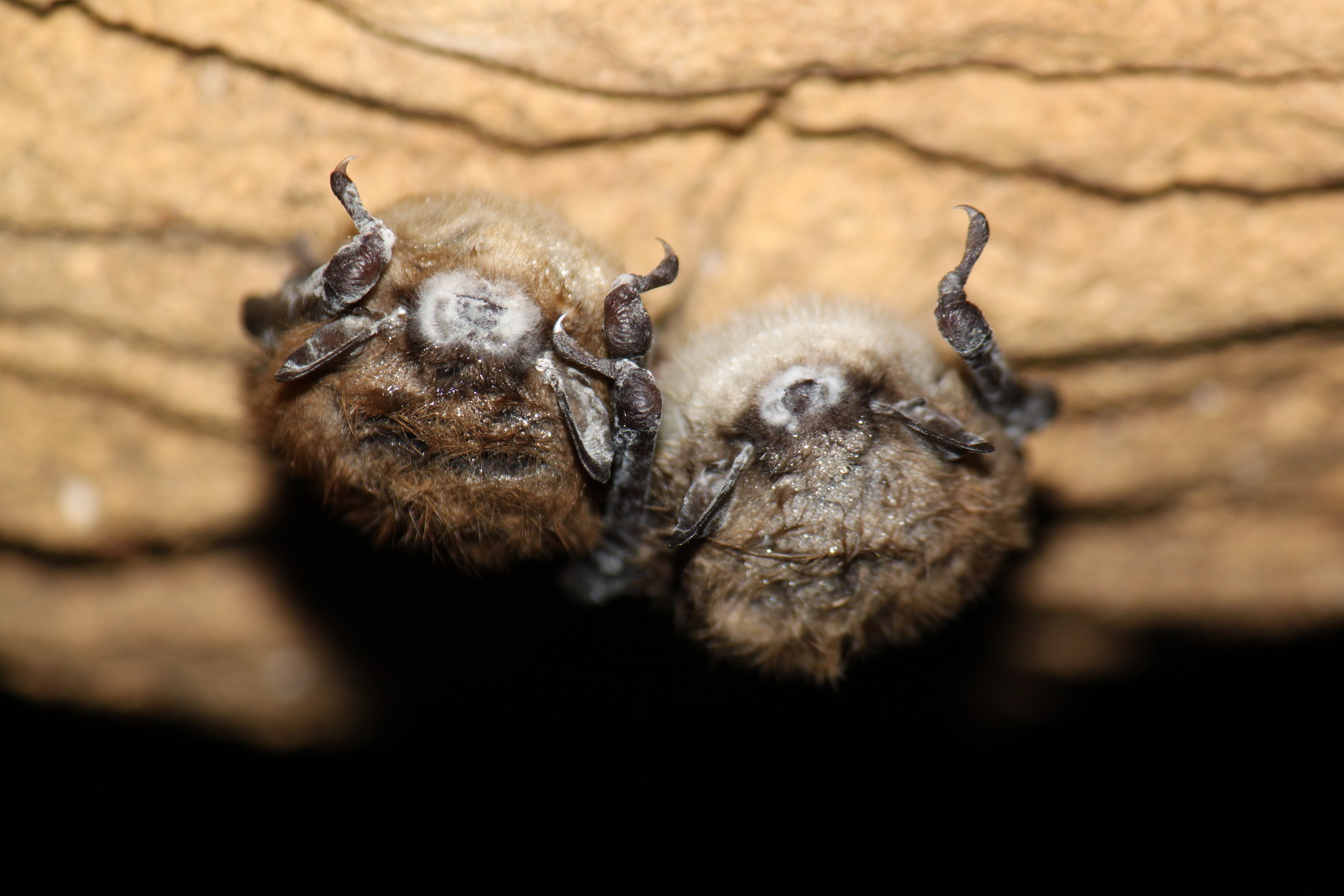|
- Home
- White-nose Syndrome
White-Nose Syndrome
| One of the biggest threats bats in North America face is an introduced species of fungus that is estimated to have killed more than 6 million cave-hibernating bats in just 7 years. Aptly named for the white fungal growth on the nose, wings, and ears of hibernating bats, white-nose syndrome (WNS) has now been confirmed on 12 bat species. It was first observed in a cave near Albany, New York in 2006 and has since spread to 35 states and 7 Canadian provinces. It is believed that the fungus, Pseudogymnoascus destructans (Pd), was inadvertently transported to the United States. Bats with WNS exhibit uncharacteristic behavior during cold winter months, including flying outside (often during the day) and clustering near the entrances of hibernacula. In some instances, bats are found sick or dying in large numbers. Scientists believe the fungus may be causing the bats to arouse too frequently during hibernation, resulting in premature depletion of their body fat reserves or affecting their water balance, and forcing them to look for food or water when very little of either may be available. Estimates of mortality often exceed 90% - sometimes reaching 100%, within a few years of WNS manifesting at a cave or mine. Numerous laboratories, state and federal biologists, and a host of other partners identified in the WNS National Plan have joined forces to investigate the cause of WNS related bat deaths. With the newly discovered fungus, Pd, having been demonstrated to cause WNS, scientists will continue to investigate the dynamics of this fungal infection and the pathways of transmission – in the end, searching for additional ways to slow or control it. For more up to date information see whitenosesyndrom.org. |


